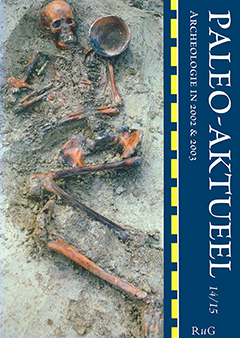Hazelnoten en mobiliteit in het Boreaal
Samenvatting
In the Near East, the transition to agriculture was characterized by a decrease of mobility, owing to the seasonality of harvesting. Huge harvests of seeds from annual species encouraged people to store food supplies on a large scale and, eventually, to settle down. In the Netherlands, the Boreal period (9000–8000 BP) is characterized by a predominance of hazel (Corylus avellana) in the vegetation. It is suggested that, analogous to the Near East, the predominance of hazel could have resulted in a temporary, heavy reliance on this attractive food source. Because the hazel also was available only during a limited period of the year, storage of substantial supplies would have been required. This might have resulted in a reduction of people’s mobility. Based on the assumption that all energy was obtained from hazel, a rough estimate is made of the maximum amount of hazelnuts a group of hunter/gatherers should collect and store to feed themselves all year round. These quantities have been used to estimate the size of a territory required for gathering these fruits, depending on population size and soil fertility. To obtain data for a multidimensional model suggestions for future research are discussed.

